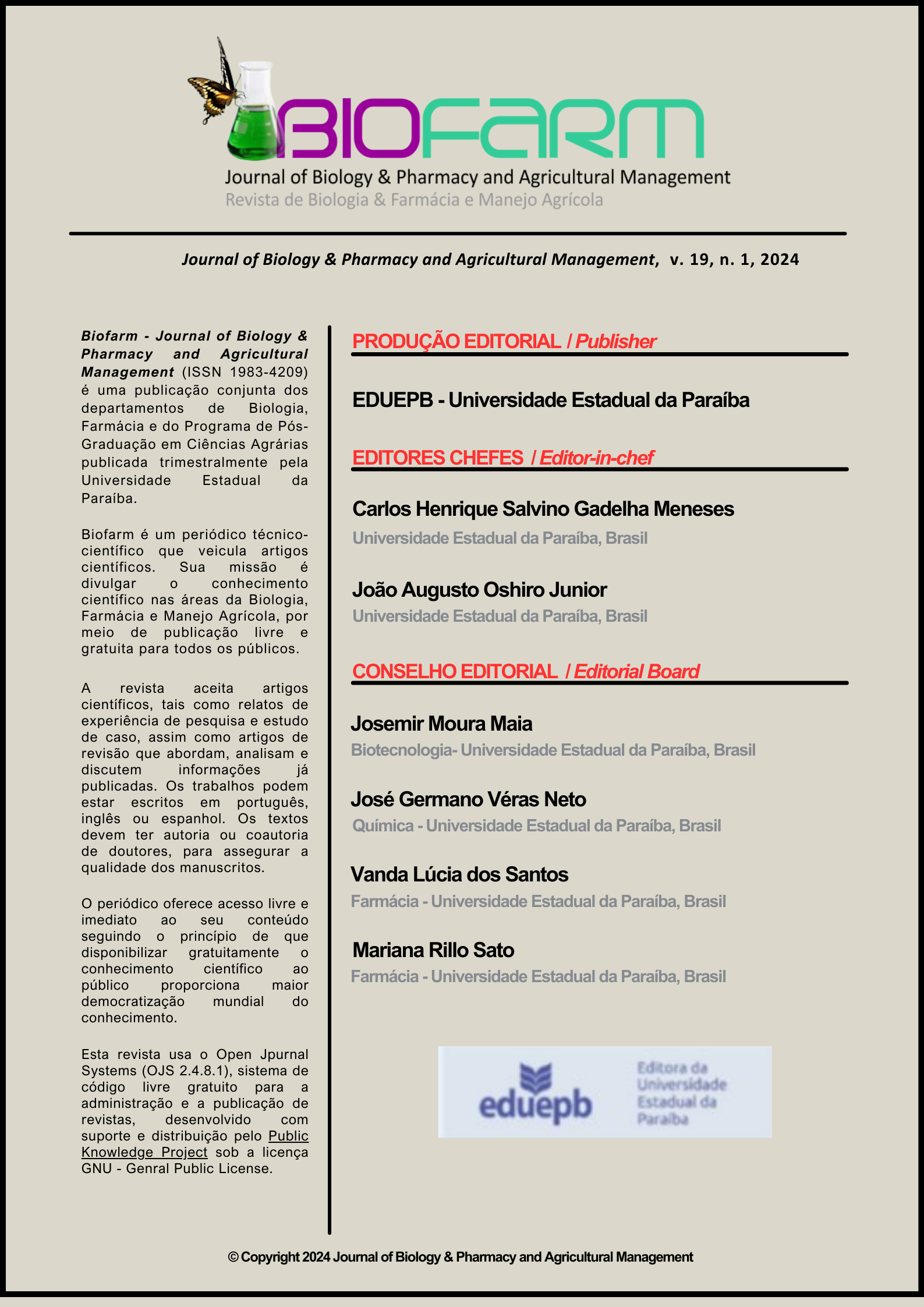Inibição do crescimento de Staphylococcus aureus por formulação contendo extrato etanólico de barbatimão
Resumo
Barbatimão é uma espécie brasileira utilizada tradicionalmente no tratamento de infecções vaginais. Sthaphylococcus aureus, Escherichia coli e Proteus sp são organismos presentes nessas infecções e podem apresentar resistência ao tratamento disponível. Portanto, o desenvolvimento de formulações que auxiliam no combate a infecções vaginais torna-se interessante. O objetivo deste estudo foi desenvolver formulação contendo barbatimão e avaliar sua estabilidade e atividade antimicrobiana. A formulação foi elaborada com lauril éter sulfato de sódio, amida 90, cocoamidapropilbetaína, ácido lático, extrato de barbatimão, imidazolinidil ureia, cloreto de sódio, mentol, álcool etílico, essência, corante marrom. Os testes de estabilidade foram realizados à temperatura ambiente (25ᵒC), estufa convencional (40ᵒC) e em geladeira (4ᵒC) por 30 dias. Os parâmetros avaliados nos testes de estabilidade foram coloração, brilho, odor, pH e formação de precipitados. A concentração inibitória mínima (CIM) foi realizada nas concentrações entre 0,78 a 100% da formulação. A estabilidade em estufa e geladeira mantiveram sem alterações a coloração, odor, brilho e pH por 30 dias. A viscosidade diminuiu 10% no teste de estufa e aumentou 5% na geladeira. A formulação foi capaz de inibir o crescimento em 100% de S. aureus. A CIM para Staphylococcus aureus foi de 25% da concentração da formulação. A formulação contendo barbatimão surge como alternativa promissora no tratamento de infecções por Staphylococcus aureus.
Downloads
Publicado
Como Citar
Edição
Seção
Licença
Copyright (c) 2024 BIOFARM - Journal of Biology & Pharmacy and Agricultural Management

Este trabalho está licenciado sob uma licença Creative Commons Attribution 4.0 International License.
Authors and co-authors retain copyright, but cede the right to first publication to the Journal of Biology & Pharmacy and Agricultural Management (BIOFARM).
Copyright encompasses exclusive rights to reproduce and deliver the article in all form and media, including reprints, photographs, microfilms and any other similar reproductions, as well as translations. The reproduction of any part of this journal, its storage in databases and its transmission by any form or media - such as electronic, electrostatic and mechanical copies, photocopies, recordings, magnetic media, etc. - will be allowed only with a written permission from the BIOFARM.
Articles published in BIOFARM will be Open-Access articles distributed under the terms and conditions of the Creative Commons Attribution License (CC BY). The copyright is retained by the author(s). BIOFARM will insert the following note at the end of the published text:
© 2023 by the authors; licensee BIOFARM, Campina Grande, Brazil. This article is an open access article distributed under the terms and conditions of the Creative Commons Attribution License (http://creativecommons.org/licenses/by/4.0/).


